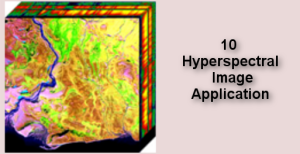GIS stands for Geographical Information Systems. It is a computer system that has the capability of assembling, storing, manipulating and displaying the geographical information. Simply put, GIS is an organized collection of computer software, hardware, data and personnel to capture, store, update and manipulate all forms of geographically referenced information. A GIS system has made it easy to analyze and manipulate geographical information. However, even though it has come with several advantages, there are various limitations to the use of GIS as outlined below.
1. It expensive: A GIS system is not cheap thanks to the complex interconnection of the various components that make up a GIS system. Besides the hardware and the software, there is need to have a fully trained human personnel that is expensive to train and acquire.
2. Integration with traditional maps is difficult: A GIS system is made up of extremely complex map structures and information that may be difficult to integrate with the traditional maps to gain any meaningful information. This means a GIS system only works with and interprets information that has been collected using the software from the start.
3. Excessive damage in case of an internal fault: Owing to the fact that a GIS system includes very complex components internally, any fault or internal outage will result into an elaborate damage that will take long hours or long periods of time to repair back to operationalization.
4. Complex data structures: The data collected and stored in GIS system is usually complex with plenty of definition and restructuring required. This means that special skills are required to understand and interpret the data collected in a GIS system.
5. Simulation is difficult: A GIS system captures complex data arrays that require special analysis to comprehend. For this reason, it may be difficult to create a simulation of the data or information captured in a GIS system.
6. Some data analysis is impossible to perform: Because of the complexity of the data structures captured or recorded in a GIS system, some spatial data may be impossible to analyze hence leading to incomplete information. Not all information captured in a GIS system can be analyzed completely.
7. Less impressive: Unlike other forms of data analysis techniques, the data captured in a GIS system is usually less “pretty” or impressive leading to some level of difficulty or complexity in the analysis of the data that would otherwise have been easy. The presentation of the data in GIS system may also not be organized for easy end-user consumption.
8. Difficulty in projection transformation: Sometimes it may be difficult to perform a projection transformation using a GIS system thanks to the complexity of the data structures.
9. Generalization may lead to loss of important information: In performing data analysis using a GIS system, there is a lot of generalization due to the massive data being analyzed. The user stands to lose a lot of information due to the generalization of data.
10. Large amounts of data: A GIS system stores extremely large amounts of data at any given time. This may create problems when it comes to analysis due to the complexity of the data and the risk of generalization. It also creates problems when it comes to interpretation.
11. Large storage: GIS data requires extremely large storage space due to the large data sizes and data types used. This also increases the cost of storage and the manpower required to manipulate the data to make sense.
12. Expensive data collection: The data collection process using a GIS system is usually expensive in the long run since not all the data collected will be useful and yet all require storage and analysis.
13. Difficult overlay operations: GIS data require complex overlay operations that are difficult to achieve especially when the personnel involved are not properly trained.
14. Time consuming: The process of collecting, storing and analyzing of information using a GIS system is long and tedious and therefore time consuming. It may take a long time to get complete information regarding a particular set of data due to the vastness of the data available.




Aneeq ur rehman
31 Mar 2019thanks for distracting me. you are showing only one side of GIS. thanks again
Gillie
20 Mar 2020I don’t agree with most of the things you have written, may your not just express yourself well. You just showing hate for GIS not necessary the disadvantages.
Vicky
18 Mar 2022Thanks a lot, I think what you wrote is very accurate and straight forward so thanks for making my work easier
Arju yadav
10 Dec 2022very helping material… thanks
Odeh
12 Dec 2022Very impressive. GIS is limited to some point and we must appreciate that. Although it has brought more benefits to the universe